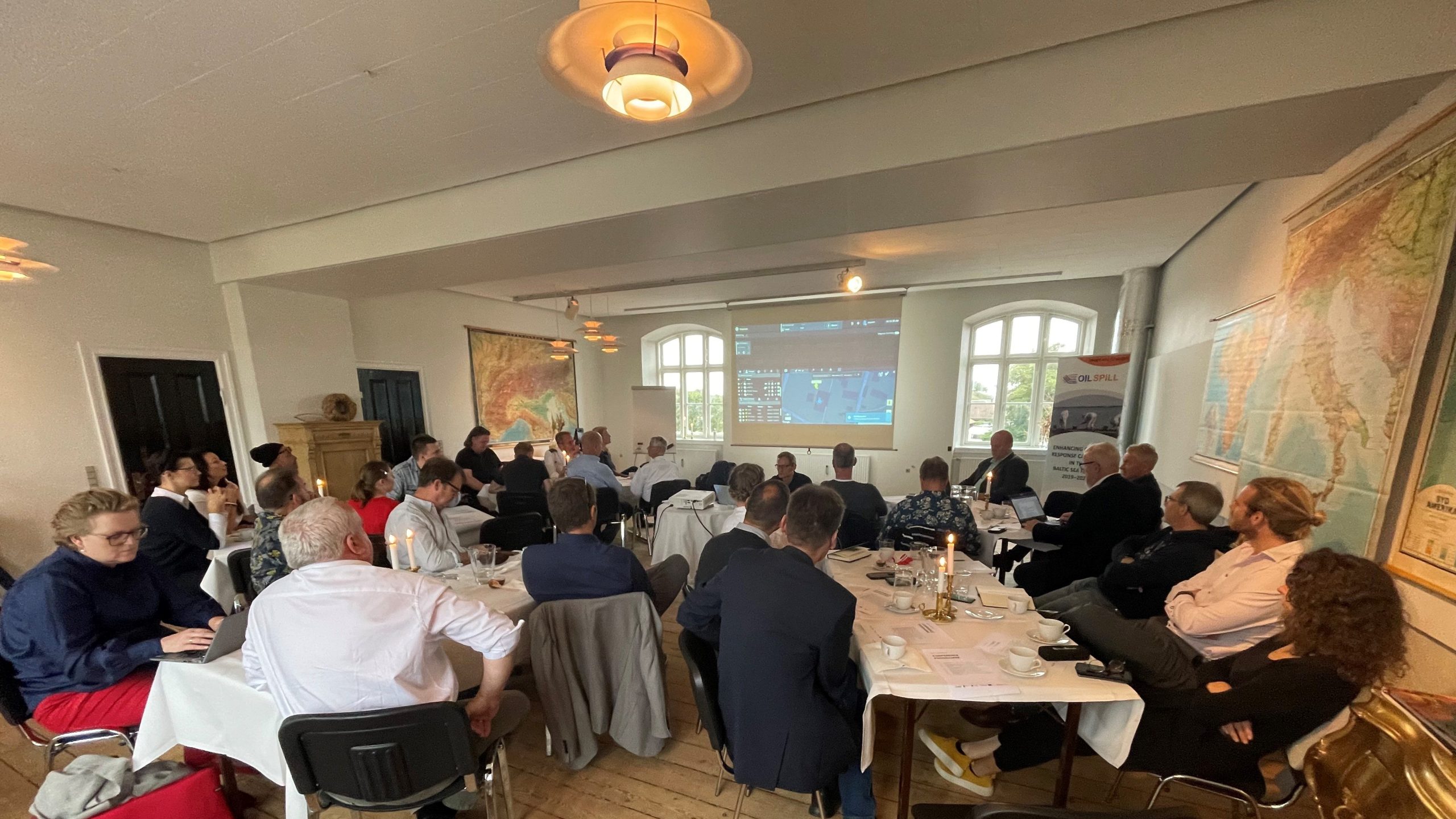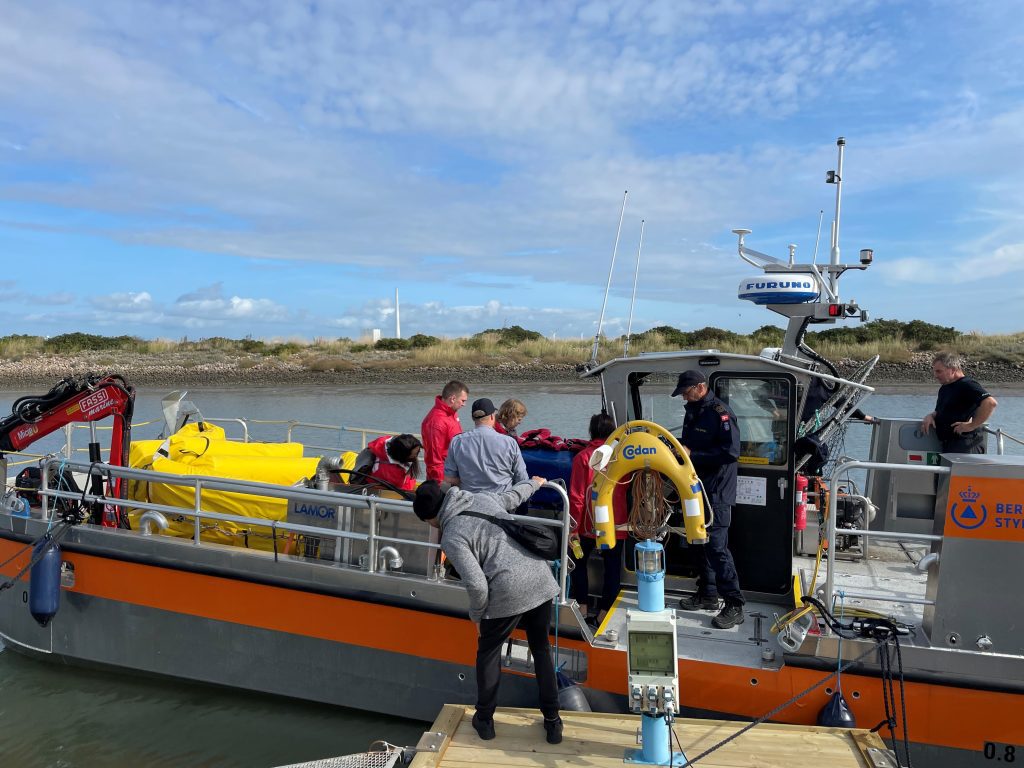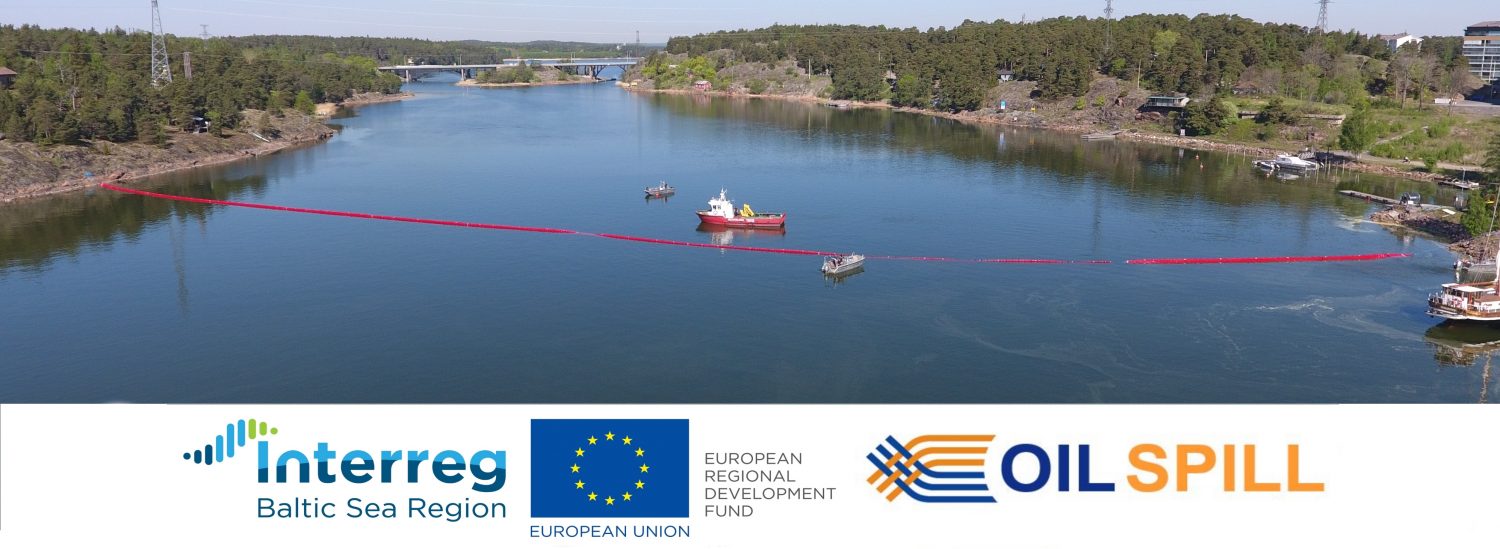Experiences and Lessons Learned from the Fanø Conference & Exercise in 2021
Written by Carsten Iversen, Danish Civil Protection League
One of the biggest activities the Danish Civil Protection League organized during the OIL SPILL Project was the Fanø conference and oil spill exercise we conducted in collaboration with the South West Jutland Fire Department and Fanø Municipality. This event took place on the island of Fanø on 23 – 25 September 2021. Fanø is surrounded by the Wadden Sea, and it is a special area with vulnerable natural zones with many different beaches, such as sandy beaches, reeds, and stones, where the oil can do significant damage.
The purpose of the conference was to prepare both the authorities and voluntary organizations in Denmark and around the Baltic Sea so that knowledge sharing can take place between the countries. After the expert presentations, we analyzed and discussed the various barriers and opportunities raised by them. Particular focus was on spontaneous volunteers and volunteers from the oil spill emergency services, including volunteer participation in remote areas and islands without an extensive preparedness of their own.
The Conference on Oil Spills
The event started on Thursday with a Danish part in order to gather knowledge and know-how for the international meeting that began in the evening and lasted until Saturday noon. The conference was based on the Groensund spill that happened in 2001. That year, on 29 of March at 00. 20 o’clock, the Admiral Danish Fleet (ADF) received an alarm stating that the oil tanker Baltic Carrier and freight ship Tern had collided south of Falster in Denmark. Shortly after, the report included oil leaking from Baltic Carrier, which had a total of 33,000 tonnes of heavy fuel oil in the cargo. Since then, the Danish authorities have changed their strategy to involve more volunteers in work on oil spills, but in 2001, they were not ready to receive spontaneous volunteers:
“We had strict rules regarding personal hygiene, as the oil could pose a health risk if it got in contact with skin or ingested. So, the volunteers need instructions and personal protection equipment. It was also an issue to ensure that the spontaneous volunteers could work in teams under the type of management they were used to. A third problem was the lodging of the volunteers, and the fourth issue was related to planning and logistics. It wasn’t sure whether the spontaneous volunteers would show up the next day or the day after when they had been doing physically hard work for twelve hours straight. In addition, there was also the question of insurance. Therefore, all spontaneous volunteers were sent away; we did not have the resources to educate and manage them. We underlined that it wasn’t because we couldn’t use their help; we simply didn’t have the resources for it.” Chief fire officer Peter Søe
Therefore, at the Fanø conference, we wanted to highlight how volunteers can be involved in the oil spill response work. With a presentation on the Baltic Carrier and the clean-up of the beaches at Falster, the participants were first inaugurated into the resources available for the Danish emergency services.
The Danish Emergency Management Agency (DEMA) is a governmental agency of the Ministry of Defence. DEMA works to prepare society for, prevent and respond to major accidents and disasters. In the event of oil pollution on the coast and the coastal parts of the territorial sea, DEMA is the operator of part of the Danish Armed Forces’ oil control equipment. DEMA can lay out floating barriers, use oil skimmers and collect oil in shallow waters. It also has the personnel resources that can be deployed when there is a need for manual collection of domestic oil.

- Read more about the Baltic Carrier accident here, and marine environmental preparedness in Denmark, here.
The Development of Island Preparedness
The Danish Civil Protection League and the local Firebrigade have been developing a new model for island preparedness, where everyone, as a citizen on holiday, will be able to register on any of the islands of Denmark. The development of an Island Preparedness/Tourist Response on Anholt is a project that is stated in DEMA’s framework agreement with the Ministry of Defence.
The Tourist Emergency Service has been presented via posters and leaflets on the Anholt ferry and where the tourists move in general. Visitors to Anholt can sign up with their name, phone number, relevant profession, and arrival and departure time. They receive a reply that they will be contacted directly if their help is needed while staying on the island. The form gives the local emergency services an overview of the resources and assistance available on the island. This new model of preparedness lies between spontaneous volunteers and volunteers enrolled in a station. The island emergency response is primarily aimed at islands and isolated and impassable places where it takes a long time for the assistance to arrive.
The project embraces people from all emergency services, which means that you can sign up as a firefighter, soldier, nurse, doctor, first aider – or something completely different. For example, in the case of childbirth, the Tourist Emergency Service can be activated and a midwife called out to assist the island doctor. The project started in the summer of 2020 when 48 people were enrolled in the Tourist Emergency Service. The model allows citizens to sign up and make themselves available to society, corresponding with the increasing interest and tendency of recent years in Denmark to make a voluntary effort.

Walk-in Volunteers
The Danish Red Cross’ presentation focused on how to register, organize and activate volunteers in action. Significant work has been done between the Nordic countries to put a Nordic perspective on the task of activating volunteers.
At a meeting in Copenhagen in 2017, the Directors-General responsible for preparedness decided to put an extra focus on the voluntary area under the Nordic auspices. Volunteers in the emergency services come from different places and with different competencies – from organized volunteers in, for example, rescue teams to volunteers who show up spontaneously when an incident occurs or is foreshadowed. The common Nordic perspective deals only with spontaneous volunteers and is the result of the two Nordic cross-sectoral working meetings on cooperation with spontaneous volunteers held in Copenhagen in 2018 and April 2019 as a follow-up to the meeting in 2017.
The backbone of the voluntary work in the rescue effort is and will continue to be the cooperation with the organized and trained volunteers. Many development issues related to the area are relevant to be discussed under the Nordic auspices. In addition, there is also a need to develop the relationship with the spontaneous volunteers. They cannot replace the organized volunteers, but they can certainly complement them in some contexts. It is relevant both to encourage and manage individual engagement and to be able to handle operational action effectively and responsibly. The perspective is intended as an inspiration for authorities and organizations in the Nordic region who may be tasked with organizing cooperation with spontaneous volunteers.
Jorma Rytkönen from Finland presented the WWF Finland’s thoughts on the use of volunteers in oil spill response work. The Finnish Red Cross is the main coordinator for the Finnish Voluntary Rescue Service, Vapepa. Red Cross co-ordinates the operations of the network related to general rescue service,while the Finnish Lifeboat Institution coordinates the voluntary maritime rescue operations, and The Finnish Air Rescue Society coordinates the voluntary air rescue operations. From the past experiences of WWF Finland, we know that volunteers will show up, and there will be a lot of them. We also know that without training and guidance, volunteers will slow down or hinder spill response operations and can potentially be a danger to themselves and others. One has to remember that the oil to be cleaned is always toxic and has to be handled with care, using appropriate protection. However, a well-trained and well-coordinated group of volunteers can be very efficient and useful!
Tabletop and Live Exercises
To practice and show the public how to handle an oil spill, exhibitions and exercises were organized on Saturday for the international participants, professionals, and the citizens at the port of Fanø.
The tabletop exercise was implemented so that the participants could observe how the fire brigade and police in Denmark use a more advanced method than paper to train emergency management and cooperation between authorities. By building a replica of the port area in Esbjerg, the police and emergency services were able to show communication, coordination, and emergency management for the audience.
In the live exercise, a boat leaked oil − simulated by peat soil − on the surface. DEMA, the local fire station, and the local sea rescue station were deployed with ships, drones, and collection equipment. The event was a great success with several hundred participants and spectators, and with exceptionally good weather, it was a super nice ending to the several days of conference and exercise.

Lesson Learned about Organizing International Conferences
Our guests came from Denmark, Lithuania, Finland, Germany, and England with varying language skills. An important lesson we learned is that the concern of whether everyone can still attend, learn and enjoy the conference is trivial if it is ensured that the participants get to talk with each other from the beginning. In our case, the reception was followed by a dinner with all the participants. The interaction in informal settings is of great value as it creates a sense of security to communicate in a foreign language. Similarly, the end of the final day took place at Fanø Brewery with tastings of their many different beers. During this event, the tongues slipped, and the many participants had a great experience with good new friendships and networks.
Thank you to all the participants who made the trip to Denmark to meet with colleagues from the other Baltic and Nordic Countries.

Leave a Reply